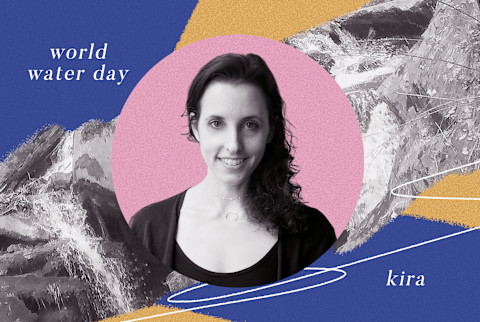An Urban Planner On How To Design A More Resilient World In The Face Of Climate Change

I can close my eyes and hear it: The peals of laughter, the whir of vegetable vendors shouting from the market, and the faint sound of bleating goats.
After a long and sticky day, I stepped off my rickshaw, walked down a few steps, and entered the old bungalow. The air was pregnant and heavy. The monsoon had not yet broken. I couldn't wait for a shower and a cup of chai.
I turned my tap on, but nothing came but a hollow coughing sound, the ghost of water gurgling. My water tank was empty.
By that point, I had grown accustomed to Mumbai's limited water supply and was rationing my water in between laundry, cooking, and showering. But this was a first: My tank would remain empty for an entire week.
In that moment, I took what my mother calls an "inner photograph" by etching the feeling in my memory. The experience showed me that the water access I'd had in the past had been a privilege. It shattered the illusion of water's abundance and made me see it as a precious resource.
I vowed to never again take water for granted. Since that day, I haven't looked at a running tap the same way.
Taking a forward-thinking approach to natural disasters.
You only realize the importance of critical infrastructure and sound urban planning when it is not there, when you are waiting for a glass of water or cup of chai that never comes.
Mumbai's water is brought in by private tankers who tap the meager water tables of the surrounding rural regions, but these water tables are drying up.
The question that keeps me up at night is...why wait to act until the water tables are completely dry? Why not predict problems and forecast solutions before they become crises?
These are the questions we are asking and solving at the Aga Khan Agency for Habitat (AKAH). We use satellite imagery to monitor, forecast, and predict what natural hazards might occur across Afghanistan, Pakistan, Tajikistan, India, and Syria.
Why planning for disaster will only take us so far.
I believe that sustainable habitat planning is one of the biggest opportunities we have to protect and maintain our world's water systems and alleviate the greater impacts of the climate crisis.
The communities we serve at AKAH are at the front line of climate change. They are directly threatened by glacial melts and flood outbursts, landslides and soil degradation due to deforestation.
They need systems that are not just built for a crisis but for a generation. Being safe in the short term after a disaster is not enough; they need infrastructure that can help them live and flourish for decades. That's why AKAH builds systems not just for a crisis but for a generation.
Our sustainable forest management and tree plantation efforts prevent land degradation and landslides and can reverse the adverse impacts of climate change. The water and sanitation systems we have built for more than 600,000 individuals have enabled sustainable water consumption, management, and access to those without running water.
We are currently working with the Swedish social enterprise Better Shelter to test and create locally adapted and upgradable emergency Structure shelters that can be rapidly deployed, upgraded, and repurposed during environmental disasters and in other times of need. And through partnerships with MIT, Harvard University, and the UN-Habitat, we are now scaling up our work to redesign both small villages and rapidly growing secondary cities.
The power of such long-term sustainable spatial habitat planning and design is often hidden. It is taken for granted as the way things are.
But in reality, it's the difference between turning on the tap and seeing water rush out and hearing a choked, dry gurgle instead. It's the difference between filling your lungs with sweet air as you run by a crystal-clear river or coughing up black phlegm into a tissue after each run. It's the difference between knowing the bus will show up to take you to the nearest hospital or waiting for hours, unsure if it will ever appear.
Good planning can promise not only resilient and high-quality water and sanitation systems but also walkable neighborhoods, access to health care, and exposure to clean air. Sustainable land and water management planning is not only critical to long-term sustainability of the environment. It's at the crux of sustainable health and well-being for us all.
Moving onward while always remembering water's lessons.

Before leaving India, I explored the Himalayas for a few months on the back of a motorbike. Glacial lakes, mountain rivers, and waterfalls surrounded me. I would drink the water from the source, feel it tingling against my lips like an electric current.
There was one waterfall, in particular, that I would keep coming back to. This waterfall danced and changed its course as it pleased. Over millennia, the small but consistent movement of the water had carved the solid rock wall behind it into a cave.
In her infinite wisdom, water reminds us that small, concerted movement—when applied to a specific place and consistently over time—is what truly succeeds in creating big and tangible shifts in the world as we know it.
